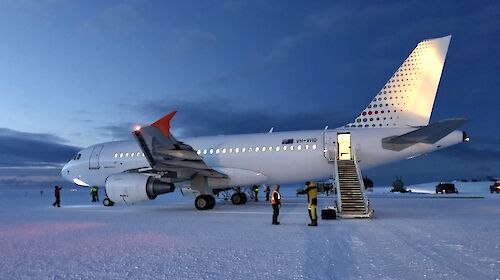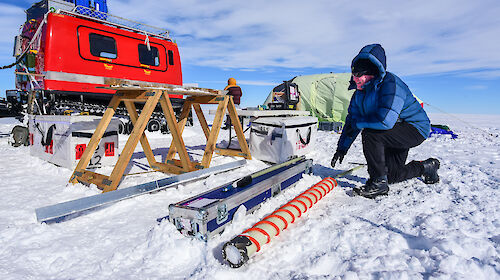Australian scientists have designed and built a luxury dirt ‘hotel’ in Antarctica to boost the appetite of tiny pollution-munching microbes.
The ‘mega-pile’ is the largest bioremediation construction in Antarctica, measuring 20 metres wide by 40 metres long, and holding around 750 cubic metres of contaminated soil.
Australian Antarctic Division’s Remediation Manager, Tim Spedding, said it will be home to billions of natural native microorganisms.
“Over the past decade we have shown one of the best ways to clean up soil contaminated with fuel in Antarctica is by encouraging the native bugs that live there to eat the fuel,” Mr Spedding said.
“The mega-pile allows us to create the best environment for these microbes to thrive, ultimately breaking down the contaminant and cleaning it up.”
The soil is remediated through constantly tweaking the conditions of the mega-pile.
“We try and keep the pile a few degrees above zero, with higher moisture content at about 10–12% water, some nutrients and a lot more oxygen, to get the microbial community as happy and active as possible.”
It took the team working at Australia’s Casey research station six weeks to construct the mega-pile.
Remediation engineer, Dr Rebecca McWatters, said they welded together a ‘sandwich’ of plastic and material layers to contain the soil while it’s undergoing remediation.
“The first layer is a geosynthetic clay liner, which absorbs water from the ground it sits on, forming a barrier,” Dr McWatters said.
“Overlaying this is a heavy-duty plastic layer and then finally a geotextile layer to stop us from puncturing the materials.
“This layering arrangement ensures we have the best barrier system against the harsh Antarctic conditions and can prevent the mega-pile being damaged by any heavy plant and equipment.”
Although the team has to contend with working outside in extreme temperatures and blizzard conditions, the outcome is worth it.
“Less than 0.05% of the Antarctic continent is ice-free, so these rocky areas with soil are very precious and among the most biologically important areas in Antarctica,” Mr Spedding said.
“They are also the areas where most stations are built, so there are inevitably contamination issues that need to be cleaned up.”
Over the past decade, the team at Casey has remediated around 2000 cubic metres of soil, proving that bioremediation is possible in Antarctica.
The clean soil is then reused in other infrastructure projects around station, reducing the amount of materials that have to be brought from Australia or sourced from the area.
The remediation team is also working with other Antarctic nations to help them set-up similar remediation projects at their stations.
“We are sharing the science behind our understanding of environmental risk, proven remediation techniques, and how to apply them so others can start cleaning-up any contaminated soil,” Mr Spedding said.













